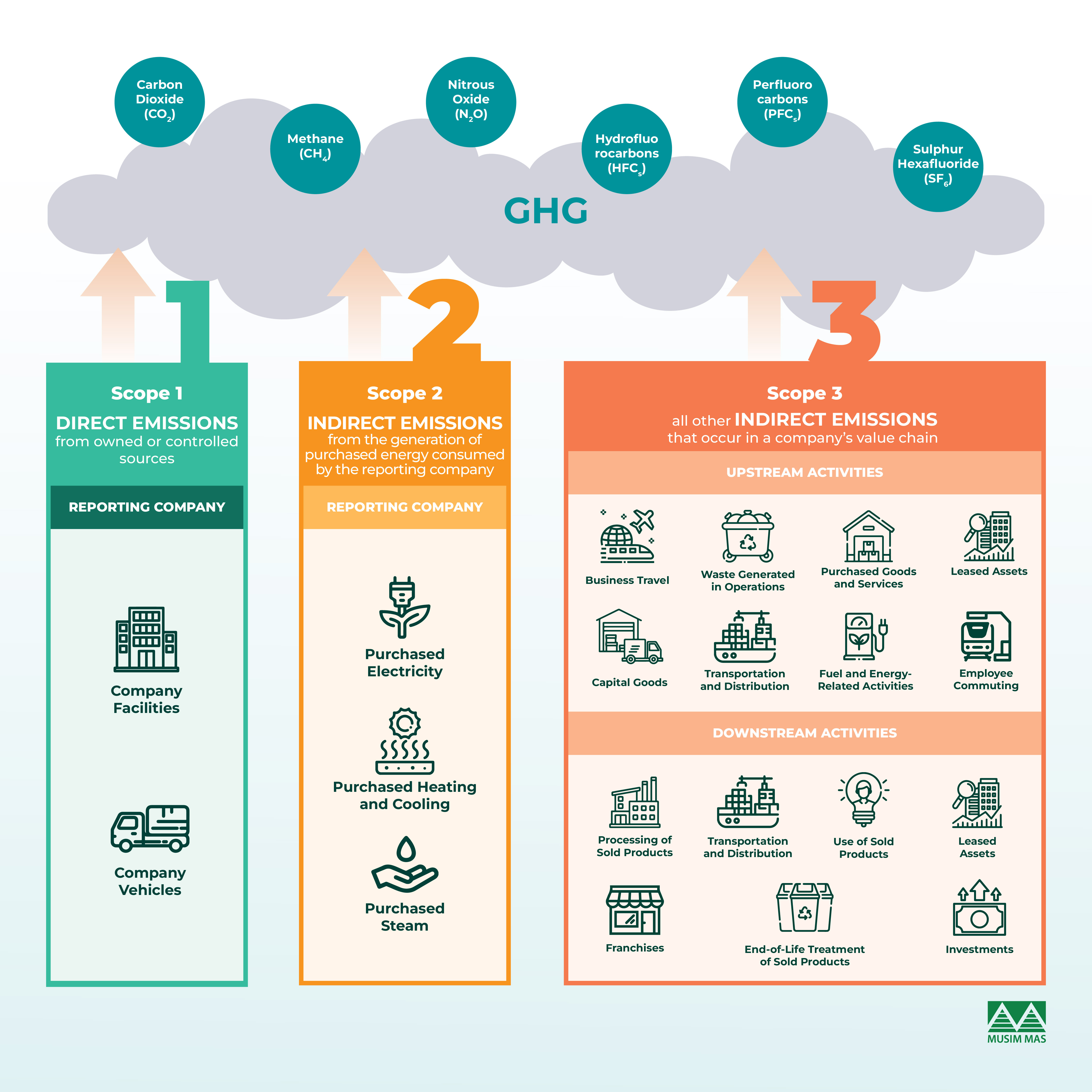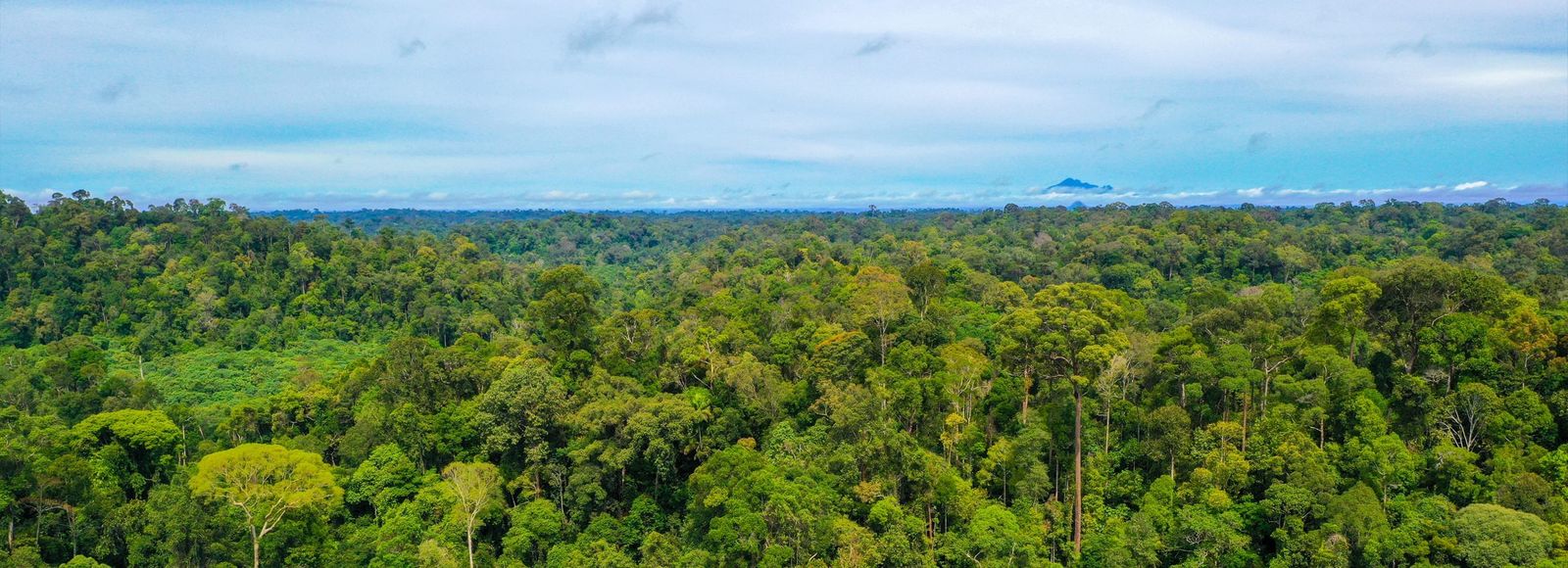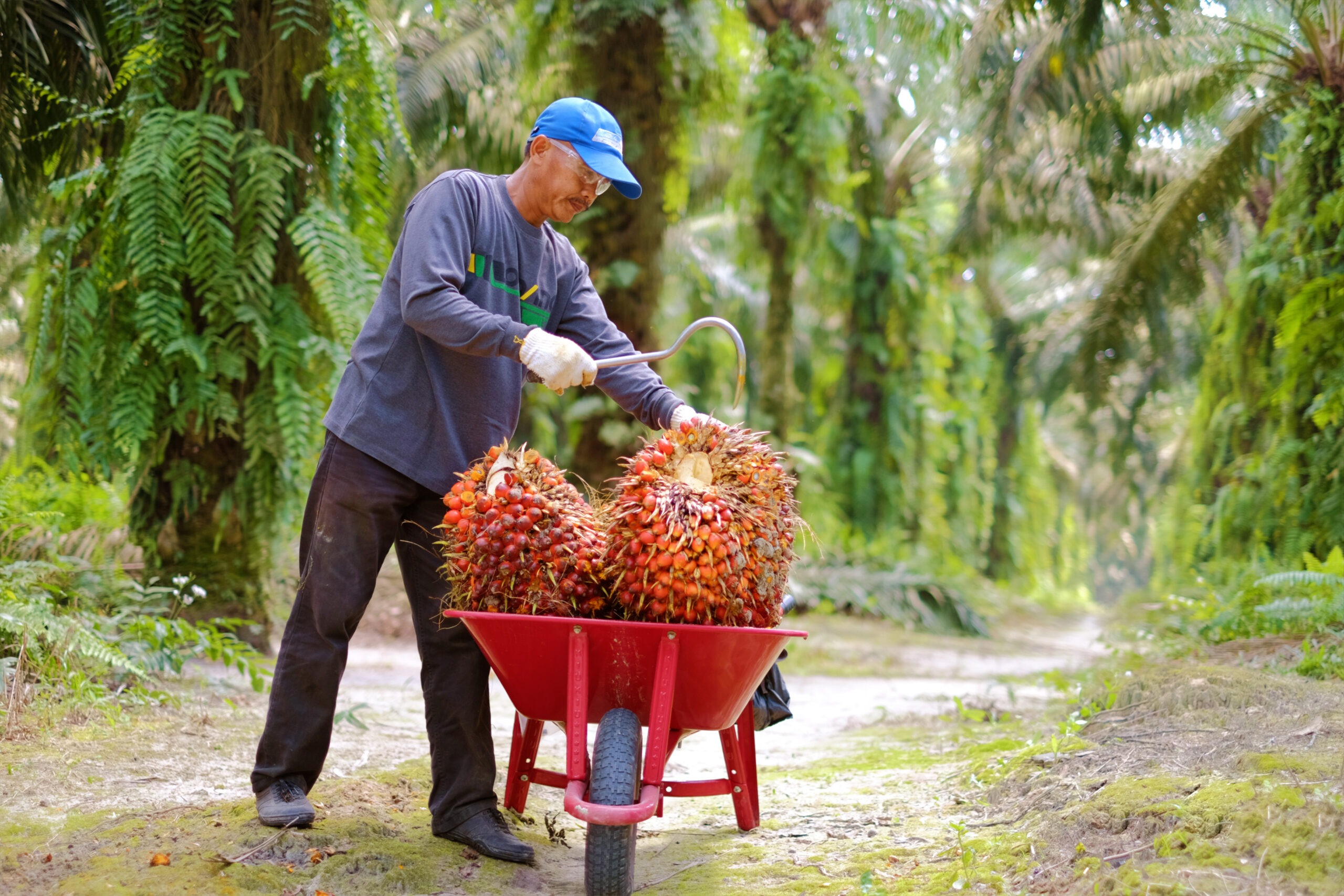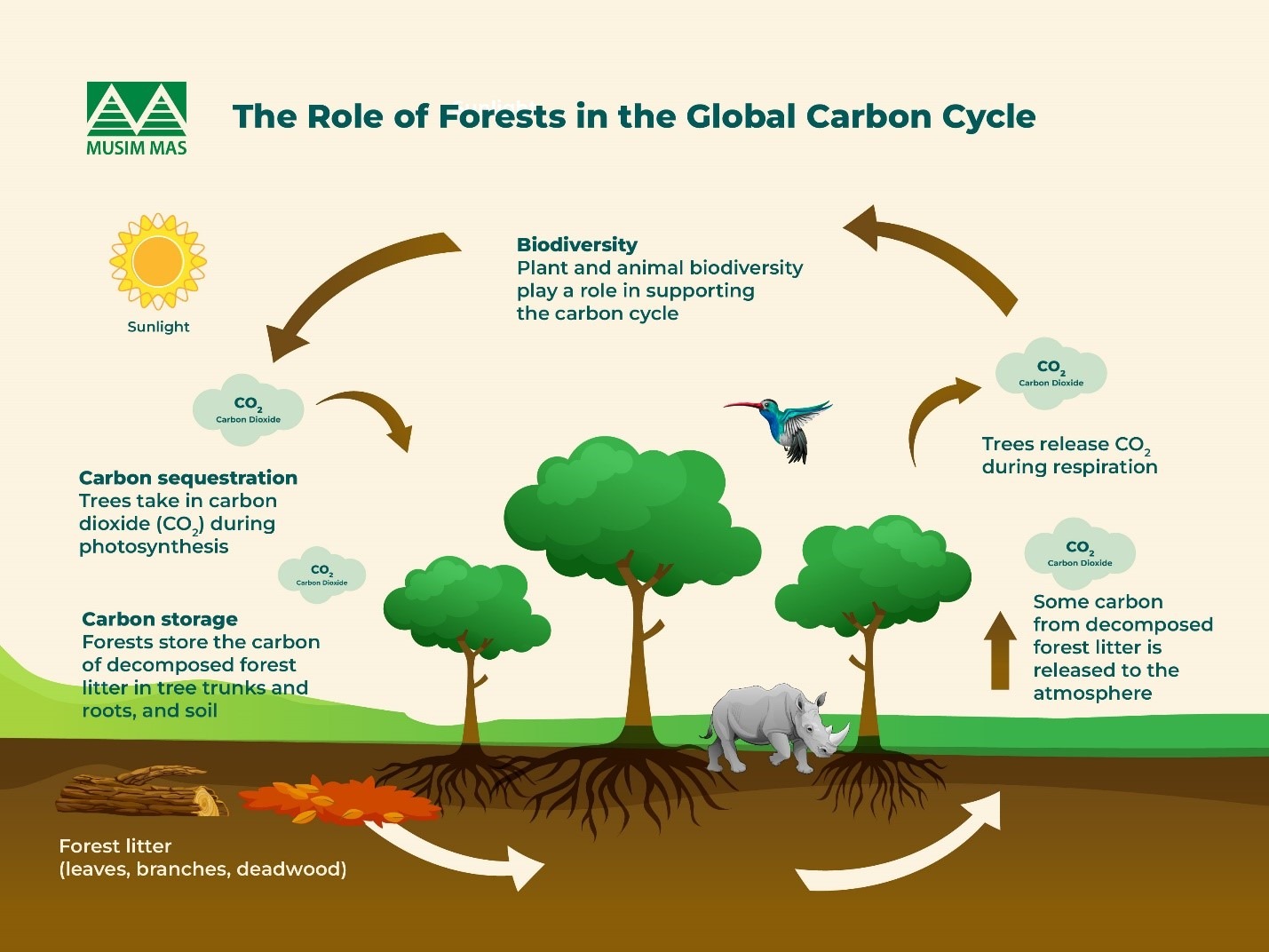By: Chermaine Yap
As the world races towards a net-zero future, navigating the labyrinth of carbon footprints and emission jargon can feel like deciphering a cryptic language. Terms like “Scopes 1, 2, and 3 emissions” can leave one feeling adrift. In this blog, we aim to demystify Scopes 1, 2, and 3 emissions, particularly in the context of the palm oil industry, offering some insights into some of the initiatives to reduce emissions in the palm oil sector.
The Origins of Emissions Scoping
The concept of emission scopes originated from the Greenhouse Gas (GHG) Protocol, a widely accepted international standard for measuring and managing greenhouse gas emissions. The purpose of categorizing emissions into scopes is to provide a standardized framework for organizations to identify and account for different sources of greenhouse gas emissions and drive emissions reduction actions across supply chains.
Definition of Scopes 1, 2, and 3 Emissions
In a nutshell, Scopes 1, 2, and 3 represent distinct categories of emissions based on their source and control. Scope 1 covers direct emissions from owned or controlled sources; Scope 2 pertains to indirect emissions from purchased energy, and Scope 3 encompasses indirect emissions from the entire value chain.

We Cannot Manage What We Do Not Measure
Just as we meticulously plan our financial goals, the initial step involves evaluating our expenditures to pinpoint areas of high spending. Setting specific targets based on our financial aspirations, we strategically budget and work towards reducing expenses in those identified high-impact areas.
In a similar fashion, approaching the measurement, reporting, and reduction of carbon footprints requires a relatable, meticulous process. Understanding one’s Scopes 1, 2, and 3 emissions is the cornerstone, much like analyzing our spending habits, forming the basis for targeted initiatives to reduce greenhouse gas emissions and minimize environmental impact. Having established the crucial foundation of understanding Scopes 1, 2, and 3 emissions, let’s now delve into the specific context of the palm oil industry.
Scope 1 Emissions: Taking Responsibility for Direct Emissions
Scope 1 emissions encompass direct emissions from sources within a company’s control (e.g., combustion in owned or controlled boilers and furnaces). In the palm oil industry, these can arise from various sources, such as plantation soil management, combustion of biomass for electricity and heat in processing facilities, fuel combustion of vehicles and equipment across plantations or ships owned by the company, and processing of harvested palm fruits.
Scope 2 Emissions: Accounting for Indirect Emissions
Moving to Scope 2, these are indirect emissions resulting from purchased energy, such as the electricity received from the grid and heat or steam received from a third party.
Scope 3 Emissions: Considering the Full Lifecycle Impact
Scope 3 emissions encompass all other indirect emissions that result from a company’s activities across the value chain (e.g., production of purchased materials, transportation of products by a third party, and even the use of sold products). Scope 3 emissions, or Corporate Value Chain1 emissions, go beyond an organization’s direct emissions – Scope 1, and indirect energy purchases (Scope 2). It often presents most of an organization’s total greenhouse gas (GHG) emissions. The GHG Protocol categorizes Scope 3 emissions into 15 categories, where categories are intended to be mutually exclusive to prevent double counting of emissions between categories.2
In the palm oil industry context, Scope 3 emissions may include (but are not limited to):
- Emissions from land use changes of suppliers.
- Third-party transportation of raw materials and product movements between different processing stages.
- Emissions from the distribution of final products to customers.
- Additionally, processing activities of sold products by customers and the disposal (end-of-life treatment) of products by consumers contribute to the overall Scope 3 emissions profile.
Reducing Emissions Within the Palm Oil Industry
Recently, Musim Mas announced its commitment to achieve net-zero emissions by 2050, aligning with climate science as per the Science Based Targets initiative (SBTi). Over the years, we have worked to reduce deforestation and carbon emissions across our operations and supply chain. Since the publication of our No Deforestation, No Peat, and No Exploitation (NDPE) Policy in 2014, Musim Mas’ own operations have been monitored and remain 100% free from deforestation and ecosystem conversion. Musim Mas was the first major group in the palm oil industry to commit to extending methane capture facilities to all its mills. In 2022, we commissioned our 17TH methane capture facility and avoided a combined 619,749 MT CO2e into the atmosphere, with the captured methane converted into electricity that powers our mill and estate facilities and the workers’ housing and social facilities.
Palm oil producers must work closely with suppliers, engage in sustainable farming and production practices, and advocate for responsible land use to mitigate Scope 3 emissions. Musim Mas actively engages our suppliers on our NDPE policy obligations and requires them to attend workshops and submit their NDPE commitments. We also ask suppliers to complete the Musim Mas Self-Assessment Tool (SAT) on sustainability commitments and performance. Their answers help us identify improvement areas and develop custom roadmaps with time-bound plans to help them meet our policy commitments.
In addition to individual company efforts, there is a need for collective action. To address emissions in the palm oil industry, it is crucial to implement sustainable practices and collaborate with stakeholders throughout the supply chain. To that end, Musim Mas and 13 other Agri-commodities companies committed to the Agriculture Sector Roadmap to 1.5 Degrees, facilitated by the Tropical Forest Alliance 12. This initiative is designed to halt commodity-linked deforestation, aligning with the 1.5-degree pathway.
Producers are not all large plantation companies. Actually, 40% of the palm areas in Indonesia are controlled by smallholder farmers. Since 2015, Musim Mas has continuously adapted and expanded its independent smallholders programs to better integrate them into our palm oil supply chains. We engage with smallholders and assist them in reaching efficient farming standards by providing training modules covering good agricultural practices (GAP) and NDPE commitments. Our programs utilize a landscape-level approach, establishing and running initiatives with local governments and stakeholders. We have found this to be the most effective approach for addressing smallholder barriers and ensuring long-lasting impacts.
Navigating the Challenges Ahead
While there undoubtedly remain challenges on our journey to achieving net-zero emissions, it is evident that we are on the right path. Although this may seem daunting, a defined objective and a means of attaining it are imperative. Our long-standing commitment to sustainable practices, enshrined in our No Deforestation, No Peat, and No Exploitation (NDPE) Policy, as well as our “continuous improvement” company culture, positions us to navigate the rough seas of sustainability favorably. To achieve reduced emissions, active involvement from our suppliers, their vendors, and the smallholders in our supply chain is also essential on this collective journey. As we embark on this impactful path, we remain steadfast in our commitment to fostering a sustainable future for all, continually innovating to diminish our environmental footprint.
1 and 2: Corporate Value Chain (Scope 3) Accounting and Reporting Standard: https://ghgprotocol.org/sites/default/files/standards/Corporate-Value-Chain-Accounting-Reporing-Standard_041613_2.pdf









